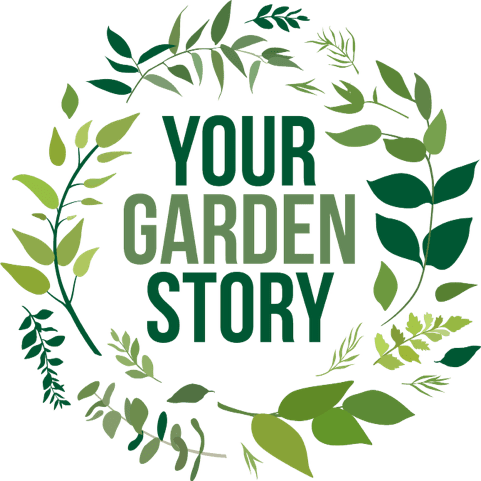Container gardening has become increasingly popular over the past decade. Planters can create fabulous accents, enhance a simple deck/balcony, and bring the garden closer to the house. They can also effectively break up large, open spaces or provide privacy and screening by creating a barrier. They create curb appeal when used on a driveway, entryway, or stoop. I love them for creating seasonal interest by swapping/combining different plants to suit changing weather. They are a great way to get started with gardening if you have limited space or experience, and they work well for growing a wide variety of vegetables and herbs. Using containers can also be useful if you want to experiment with native plants for the first time.
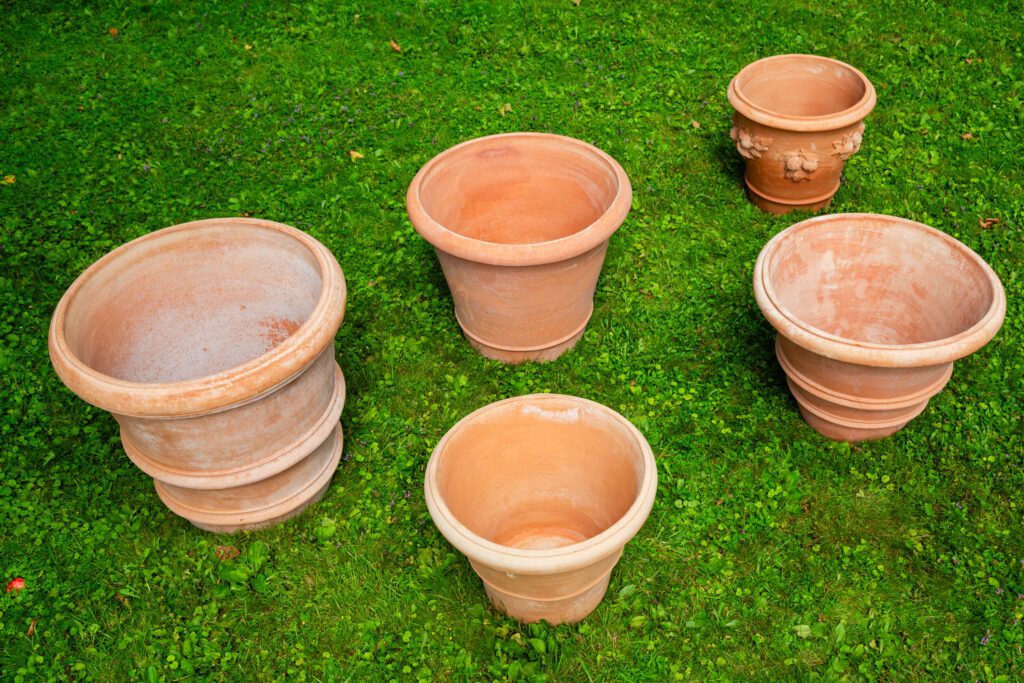
But how do you decide what type of container is right for you?
Before you start ordering, if you already have planters, do a stock check and take a moment to look at your existing containers/outdoor planters.
- Are they damaged/broken?
- Do you like them? Or did you inherit them?
- Do they need a good clean or a complete overhaul?
- What look do you want? Think about the aesthetics inside your home and what suits the architecture.
- Are they positioned right? Do they create good focal points, provide a screen, or fill a gap in an open border?
What are your options if you decide to buy new planters?
It’s helpful to consider your home’s architecture. The planter’s color and texture should complement your home’s facade. For example, if you want a planter that will complement a brick home, choose terracotta or clay, whereas for a more traditional home, you may want to consider wood.
Size and Shape
Top tip: the bigger, the better. Spend money on big, good quality planters; they have far more impact, even in a small garden.
Planters always look more significant at the store or online than at home. The most common mistake is buying a planter that is too small for the space. That creates two problems. First, the planter gets swallowed up by its surroundings and does not make the impact you want. Second, it isn’t big enough to hold all your plants. Avoid this by carefully measuring your space and buying a more prominent planter than you think. Think about shape, too, in the context of the space.
– Rectangular: Simple and elegant, rectangular planters complement several different architectural styles and are ideal for providing privacy, screening, or acting as a divider in a low-key manner.
– Circular: Versatile and work well with a variety of architectural settings. The circular shape can create harmony and balance across most locations if the pot is kept in proportion to the space. If
you have ample space, consider using multiple small planters instead of one large pot. This will help to fill the room without making it look too busy.
– Square: A classic choice, square pots also work well with architectural styles. They have a more formal but straightforward, clean-lined look. They can effectively create a more traditional look in your garden and create structure by lining them up along a path or driveway.
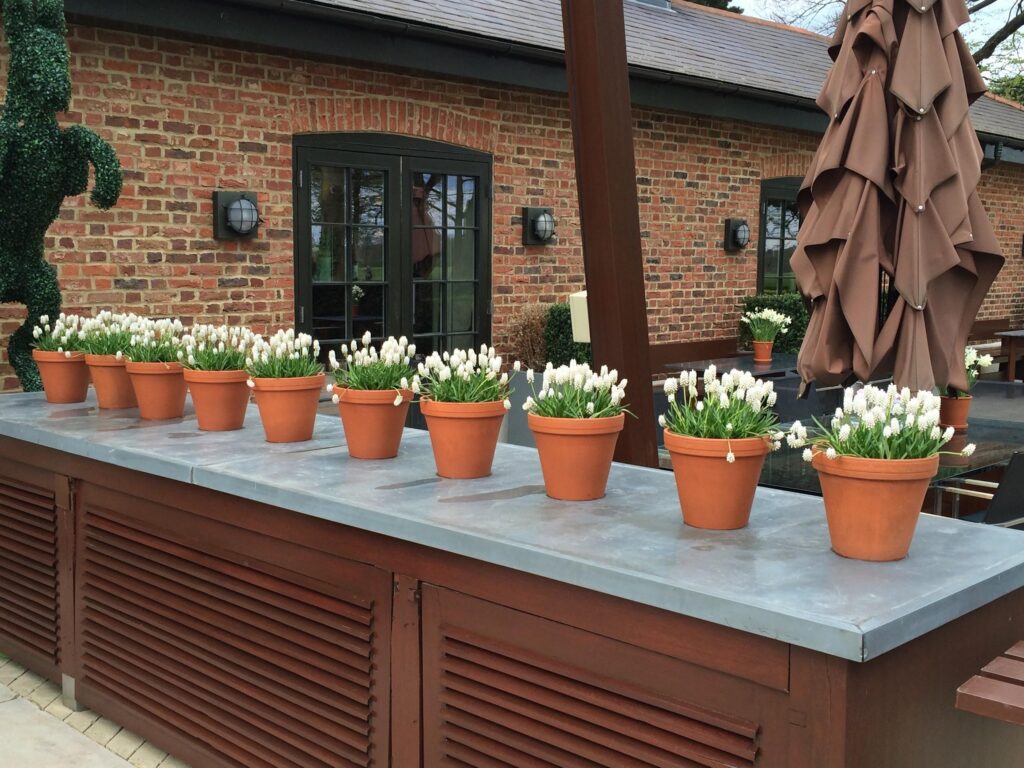
There are many types of containers on the market:
– Terracotta: Great as a pop in color but only sometimes frostproof. They can be heavy; generally, soil dries quickly in the summer heat in a terracotta pot. This makes them ideal for herbs and empty as focal points/accents.
– Composite: Stylish, durable, sturdy, but more expensive. The real benefit is that they won’t dry out and are light, making them easy to move around.
– Fiberglass: High-end, lightweight, but double the price of composite
– Metal: Aluminum is light and doesn’t rust, corten steel is fashionable, and stainless steel is modern and streamlined.
– Wood: An attractive, natural product that is great for air circulation and water retention but weather quickly and requires maintenance. Only use natural wood like cedar, teak, or ipe when possible.
– Plastic: They are cheap, easy to replace, and durable, but they can look cheap and are easy to knock over. It is helpful as a liner for a more expensive container.
Seibert & Rice is my favorite supplier of handmade terracotta planters and urns. Made in Italy, the first collection was previewed at the New York Flower Show in 1995. Their terracotta pots are frostproof and can survive cold winters unscathed. Imprunetta terracotta is now well known in the US, and Seibert and Rice have a fantastic collection. Bergs Potter also makes beautiful terracotta pots for both indoor and outdoor use, designed to help your plants thrive.
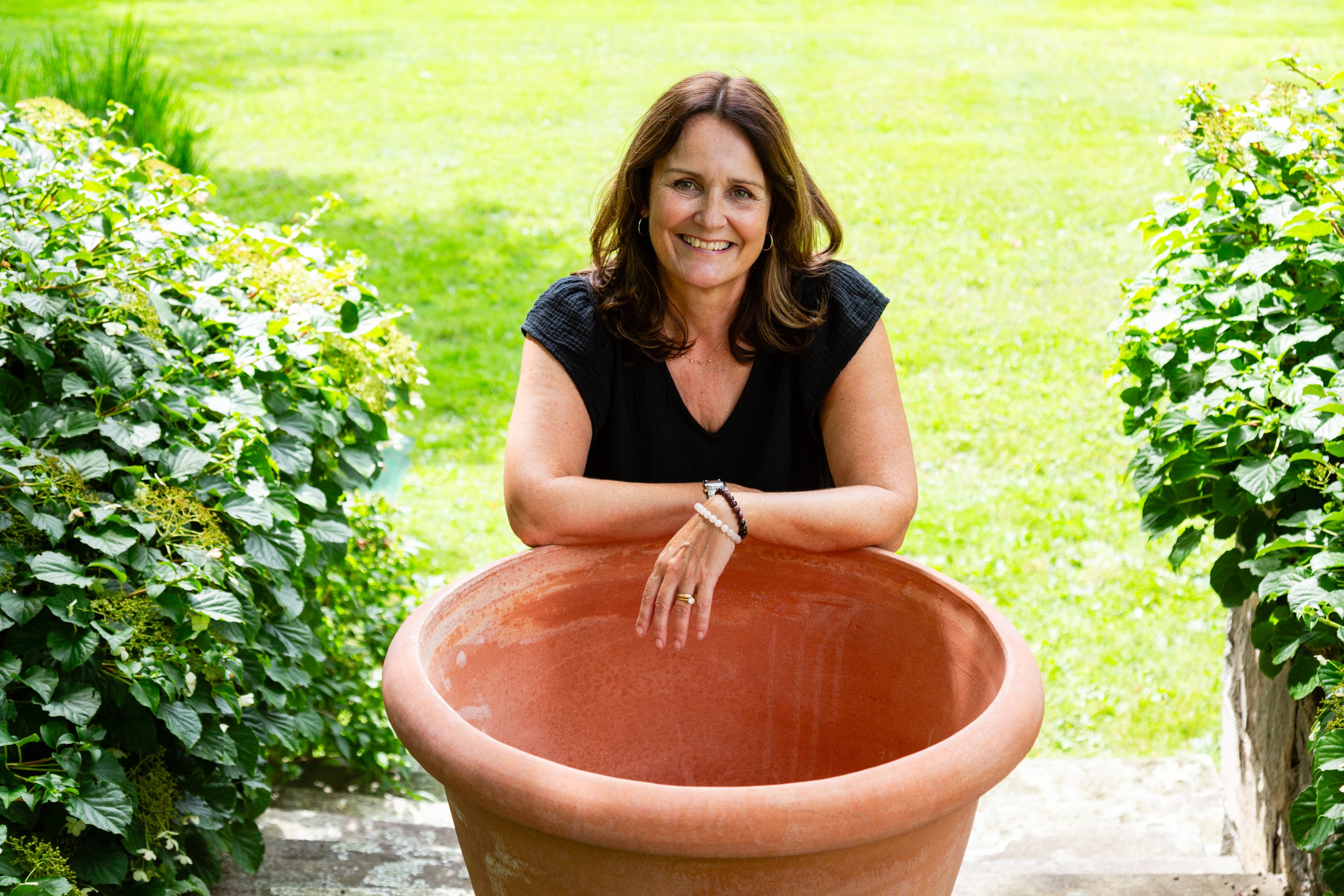
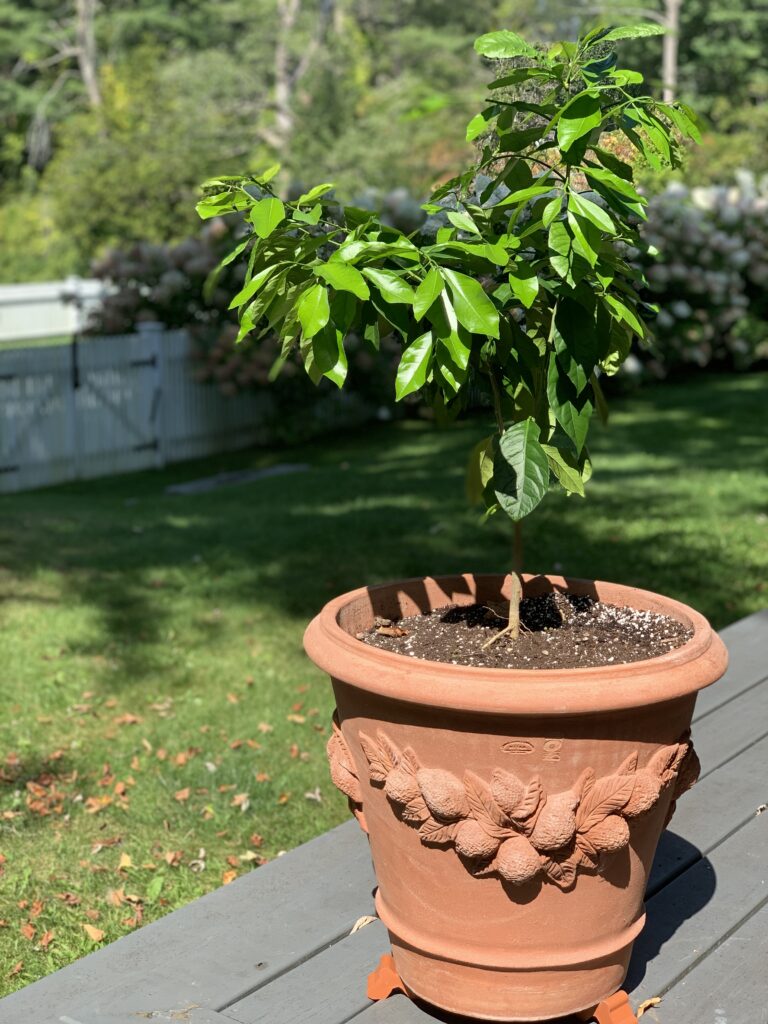
Whatever style you decide, I recommend neutral color planters in terracotta, white, black, or gray. The plants should be the show’s star unless you use the planter as a piece of decor/sculpture in your garden, which can be effective. This beautiful lemon container from Seibert and Rice is an excellent example of the planter as a piece of sculpture. It looks amazing as the new home for one of the lemon trees I grew from seed. Gorgeous!
Preparing your planters for use
If you use existing planters, clean them using a bristle brush each year and, if necessary, some bleach to eliminate the previous year’s debris. Remove old soil, root balls, and debris from last year, and buy some potting mix. Whether your planters are new or old, create drainage holes in the bottom and raise the pot above ground level. Fill with a layer of gravel and fabric liner, then compost. Forward is an excellent compost or Hamptons Estate. If you are on a windy rooftop or deck, put a thin layer of gravel on top of the compost to stop it from blowing away.
Drainage, drainage, and drainage are crucial to container success! Plants need room to grow in the planter and oxygen for their roots. Drainage holes and having your pot sit above ground level will be crucial to success.
Top tip: Add perlite to your potting soil to help with drainage
Also linked to drainage are water, water, and water. It is important to regularly water your containers, especially in those dry summer months. Consider a drip irrigation system even for containers; consistent, regular watering makes all the difference.
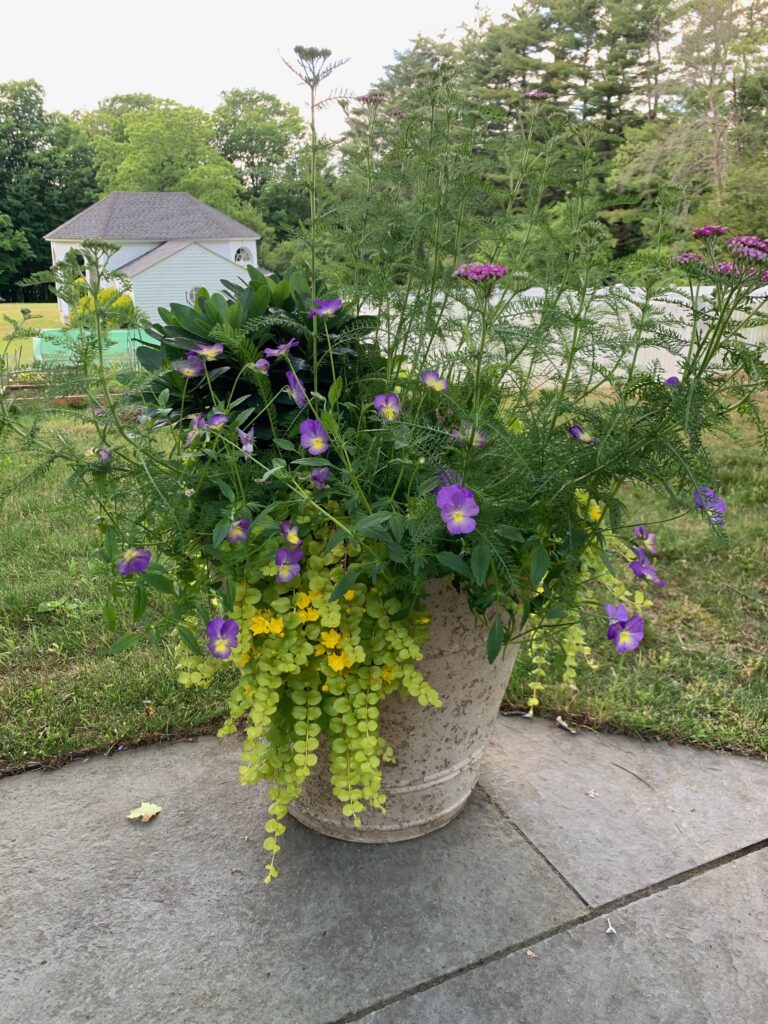
Top tip: Place your containers in their final position before planting. It’s much easier than moving a heavy container.
Top tip: When you water containers, water until you see water coming out of the bottom of the container
Deciding what to plant in your containers
In a future blog, we will return to specific ideas about plants for containers, but there is an effortless way to think about design. Think of your container as having a ” thriller ” or accent plant placed off-center. Its thrill can be its flower, foliage color, or texture. Most containers look better with a “spiller” plant, which has a form that makes it spill over the sides. And then some “filler” plants that add volume to the design and contrast with the thriller. Depending on the container size, add a smaller thriller plant in the center of the container.
Plan ahead
Gardening success is about good planning. Doing a stock take of your existing planters will pay off in the spring. Winter can be a fantastic time to shop for planters as nurseries and garden centers often sell off inventory. Please get in touch if you want help sourcing planters for your garden, I have several great suppliers in various styles. High-quality planters also have extended delivery lead times, so ordering ahead is wise.
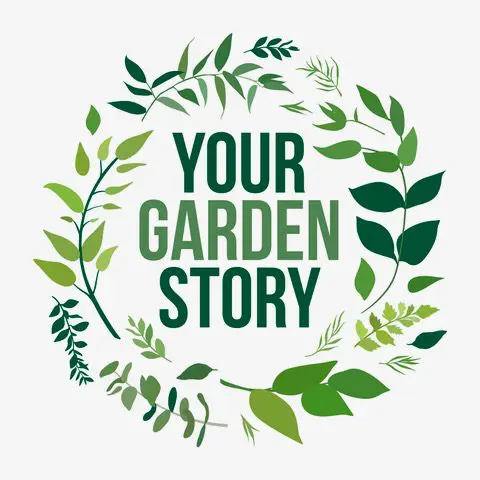
Get in touch
Get in touch if you want more information on items included on my website or need help sourcing plants or containers. Your Garden Story is here to help bring out the gardener in all of us.
